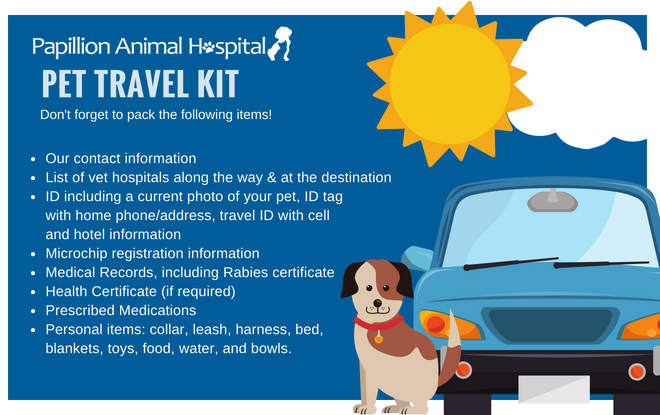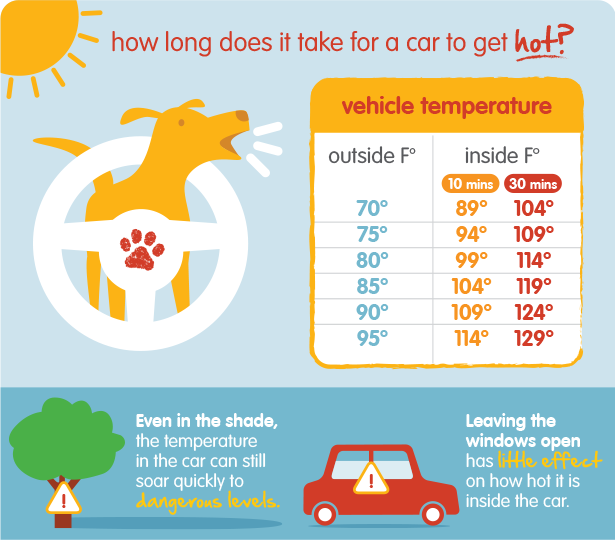Traveling with your pets
Since our furry friends are beloved family members, it’s natural to want them to tag along for vacation! Traveling with pets can be an awesome experience – the key, though, is proper planning and preparation. Before you hit the road, read our tips for creating a positive traveling experience for both you and your pets!
Vet Check-Up
Once you’ve decided to bring your pet along on vacation, schedule a wellness exam with us. We can help make sure Fido is ready for travel, ensuring all vaccinations are current and issue a health certificate if needed. A health certificate and proof of rabies vaccination are required when traveling across state lines. Contact us for more information on International travel. If your pet gets sick during travel, we can also prescribe an anti-nausea medication for the car ride.
We also recommend that all of our patients be implanted with a microchip. Microchipping is a fast, painless procedure (similar to getting a vaccine) and is the only permanent form of identification. Microchipping greatly enhances a pet’s chance of getting back to their family if they should get loose or become lost.
Pre-Vacay Planning
Have a list of hospitals and 24-hour emergency facilities along the way and at your destination. Once your pet is current on vaccinations and you’ve made pet-friendly accommodations make sure the following items are packed:

Time to hit the road!
Traveling
When traveling by car, it is important to make sure everyone in the car is happy and comfortable. You should have a proper means of restraint for your pet. Cats and small dogs should be in a clean, well-ventilated carrier and larger dogs should be restrained by pet carriers, pet car seats, or harnesses. Without proper restraint, pets can be a distraction and risk injury or death to themselves in the event of an accident.
As stated on forbes.com, according to the AAA, an unrestrained 10-pound dog in a crash at only 30 mph will exert roughly 300 pounds of pressure, while an unrestrained 80-pound dog in a crash at only 30 mph will exert approximately 2,400 pounds of pressure. Before you hit the road, acclimate your pet to being restrained, so they are comfortable come vacation time. Also, keep your pet away from open windows. Dogs may love the feel of fresh air, but it is not safe. They can easily be hit with debris or jump out by a nearby distraction (squirrel!!).
Rest stops and Car safety
Once the trip is underway, be prepared for frequent stops. During this time, pets can go to the bathroom, get a quick drink of water, and exercise. Try to choose places to stop that have designated pet walking areas. During stops, make sure your pet is wearing a collar with ID tags, restrained on a leash and away from busy traffic areas.
Be mindful of the temperatures if leaving your pet in the car. Just minutes in a hot car can be deadly to both people and pets. As noted in the below chart, the temperature inside a car can rise almost 20º F in just 10 minutes. That means if the outside temperature is 90º F, the temperature inside the car after 10 minutes is 109º F!

What’s more, a study cited by the American Veterinary Medical Association, found that cracking the windows has little effect on decreasing the temperature inside the vehicle. Therefore, it’s best to do a little research and stop at pet-friendly establishments or restaurants with outdoor seating.
For information on traveling with pets by air or others forms of travel, visit the American Veterinary Hospital Association’s Pet Travel FAQ page and please don’t hesitate to contact us with any questions prior to traveling with your pets.
